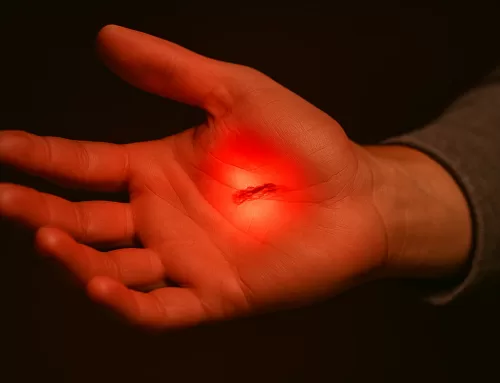Allografts, the transplantation of tissue or organs from one individual to another of the same species, play a crucial role in modern medicine. They offer life-saving solutions for patients suffering from organ failure or tissue damage, and advancements in this field have significantly improved patient outcomes over the last few decades. However, the success of allograft transplants depends not only on the technical skill of the transplant surgeons but also on a complex interplay of biological factors, including immune response, tissue compatibility, and the body’s ability to accept foreign tissue.
The process of allografting is far more intricate than simply transferring a healthy organ or tissue from a donor to a recipient. The body’s immune system is designed to protect against foreign invaders, and transplanted tissue is often recognized as “non-self,” triggering an immune response that can lead to rejection. To overcome this challenge, medical professionals must employ strategies like immunosuppressive drugs and tissue matching to minimize the chances of rejection and promote graft survival. In addition, the biological mechanisms that underlie both the acceptance and rejection of an allograft are still being studied, offering new opportunities for improving transplant outcomes.
This introduction to the science behind allografts will explore the underlying mechanisms, challenges, and breakthroughs in the field of transplantation. By understanding the immunological, biological, and technological aspects of allografting, we can gain insight into the advancements that continue to enhance the effectiveness and safety of these procedures, ultimately saving lives and improving the quality of life for countless individuals worldwide.
Understanding the Immunological Basis of Allograft Transplantation
At the heart of allograft transplantation lies the immune system, which plays a pivotal role in determining the success or failure of the procedure. The immune system is designed to defend the body against foreign invaders, such as viruses, bacteria, and other pathogens, but it can also perceive transplanted tissue as foreign and initiate an immune response against it. This response is one of the primary challenges to the success of allografts and is known as “rejection.”
The immune system relies on a series of complex mechanisms to distinguish between self and non-self. The key players in this process are proteins known as Major Histocompatibility Complex (MHC) molecules, which are present on the surface of cells. These molecules serve as “identity markers,” allowing the immune system to recognize the body’s own cells and distinguish them from foreign ones. In the case of an allograft, the donor tissue carries MHC markers that differ from the recipient’s, signaling to the immune system that the transplant is foreign.
The T cells of the immune system are particularly involved in this rejection process. When a transplant is recognized as foreign, T cells activate and launch an attack to destroy the allograft. There are two main types of rejection: hyperacute rejection, which occurs immediately after transplantation, and chronic rejection, which develops over a longer period. Both types involve the immune system’s response to the foreign tissue, but they differ in their timing and severity.
To prevent rejection, transplant recipients are typically prescribed immunosuppressive medications, which inhibit the immune system’s ability to attack the allograft. These drugs are essential for preventing immediate rejection and promoting long-term graft survival. However, long-term use of immunosuppressants can increase the risk of infections and other complications, making the balance between preventing rejection and protecting overall health a delicate one. Understanding the immune mechanisms behind allograft rejection is vital to developing more effective treatments and improving the success rates of transplants.
From Donor to Recipient – The Journey of Allograft Cells
The journey of allograft cells, from the donor to the recipient, is a complex process that involves several stages, each crucial to the success of the transplant. This journey begins with the donation of tissue or an organ, which is typically harvested from a living or deceased donor. The organ or tissue must be carefully preserved and transported to ensure it remains viable for transplantation. The condition of the graft at the time of transplantation is a significant factor in determining its long-term success.
Once the tissue or organ arrives at the recipient’s medical facility, the next critical step is ensuring compatibility between the donor and recipient. Tissue matching, including the assessment of human leukocyte antigens (HLAs), is essential for reducing the risk of rejection. HLAs are proteins found on the surface of cells that play a crucial role in the immune response. The closer the match between the donor’s and recipient’s HLAs, the lower the likelihood of the recipient’s immune system recognizing the transplanted tissue as foreign. In some cases, however, even a close match may not entirely eliminate the risk of rejection.
The transplant procedure itself involves the careful implantation of the graft into the recipient’s body. Surgeons must ensure proper blood flow to the transplanted organ and monitor for any signs of complications during the immediate post-surgical period. Following the procedure, the recipient’s immune system begins to assess the foreign cells and may trigger a rejection response if it recognizes the graft as non-self.
The recipient must be closely monitored for signs of rejection, infection, or other complications. Immunosuppressive drugs are prescribed to manage the immune response and prevent rejection. These medications help the body accept the allograft by dampening the immune system’s activity. Over time, the recipient’s immune system may adapt to the new tissue, leading to better integration of the allograft, but this process is delicate and requires ongoing management. The journey from donor to recipient is a dynamic process involving science, careful medical intervention, and the resilience of the human body.
Challenges and Breakthroughs in Allograft Rejection
Allograft rejection is one of the most significant challenges faced in organ and tissue transplantation. It occurs when the recipient’s immune system recognizes the transplanted tissue or organ as foreign and mounts an immune response to destroy it. Rejection can be immediate or it may develop over time, posing a considerable hurdle to long-term graft survival. Understanding the mechanisms of rejection and developing strategies to overcome these challenges has been at the forefront of transplant research and clinical practice.
There are three primary types of allograft rejection: hyperacute, acute, and chronic. Hyperacute rejection happens almost immediately after transplantation and is caused by pre-existing antibodies in the recipient’s immune system that recognize the donor’s tissue as foreign. This type of rejection is often fatal and can only be prevented by careful tissue matching and screening of recipients for antibodies against common antigens. Acute rejection, on the other hand, occurs within weeks to months following transplantation and is typically caused by the recipient’s T-cells attacking the transplanted tissue. Chronic rejection is a slow, long-term process, occurring over months or years, where the transplanted organ gradually loses function due to ongoing low-level immune activity.
One of the breakthroughs in transplant medicine has been the development of immunosuppressive drugs. These drugs help suppress the immune system’s response, reducing the likelihood of acute rejection. However, the use of immunosuppressants carries its own set of challenges, including an increased susceptibility to infections, cancer, and other health issues. Finding the right balance in immunosuppressive therapy remains a delicate challenge.
Recent advancements in tolerance induction and gene editing technologies hold promise for reducing rejection and improving graft survival rates. Research into immune tolerance, where the immune system learns to accept the transplanted organ without constant immunosuppressive therapy, is showing potential. Additionally, the development of more precise drugs and the use of stem cell therapies may offer solutions to further minimize rejection and improve the quality of life for transplant recipients. While much progress has been made, overcoming the complexities of allograft rejection remains a dynamic area of research in transplantation science.
The Role of Tissue Matching and Immunosuppression in Allografts
Tissue matching and immunosuppression are two critical components in the success of allograft transplants, aiming to minimize the risk of rejection and ensure that the transplanted tissue or organ integrates smoothly into the recipient’s body. Both processes work hand in hand to create the best possible outcome for transplant recipients.
Tissue matching refers to the compatibility of the donor’s and recipient’s immune systems, primarily assessed through the identification of human leukocyte antigens (HLAs). HLAs are proteins found on the surface of cells that play a key role in immune recognition. The immune system uses HLAs to differentiate between the body’s cells and foreign cells. In the case of a transplant, if the donor’s HLA markers significantly differ from those of the recipient, the immune system may recognize the donor tissue as foreign and initiate a rejection response. Therefore, tissue matching aims to minimize these differences. Typically, the more closely the HLA markers between donor and recipient align, the lower the chances of immune rejection. This is why matching is particularly crucial in organ transplants like the kidney, heart, and liver.
Despite optimal tissue matching, the immune system can still mount an attack on the transplant, especially in cases where there are subtle mismatches or when the recipient has pre-existing antibodies against the donor’s tissue. To combat this, immunosuppressive drugs are used to suppress the immune response, preventing rejection. These drugs reduce the activity of immune cells, particularly T-cells, which are responsible for attacking foreign tissue. While immunosuppression is essential for transplant success, it carries significant risks, including increased susceptibility to infections and certain types of cancer due to the dampened immune system. The balance between preventing rejection and protecting the body from other diseases remains a critical challenge in transplantation medicine.
Advancements in immunosuppressive therapies and tissue matching techniques continue to improve transplant success rates, allowing for better long-term outcomes for recipients and reducing the complications associated with immune rejection.
Exploring the Biological Mechanisms of Allograft Success and Failure
The biological mechanisms behind the success and failure of allografts are deeply rooted in the body’s immune response and its ability to accept or reject foreign tissue. Understanding these mechanisms is critical for improving transplant outcomes, as the success of allograft procedures hinges on the complex interaction between donor tissue, the recipient’s immune system, and the environment in which the graft is placed.
At the core of allograft rejection is the immune system’s recognition of foreign tissue. The primary players in this process are T-cells, which are part of the adaptive immune system. When an organ or tissue is transplanted, the recipient’s immune system identifies the donor tissue as “non-self” due to differences in human leukocyte antigens (HLAs) present on the surface of the donor cells. This mismatch prompts an immune response, leading to the activation of T-cells, which attack and destroy the transplanted tissue. The severity of this immune response depends on the extent of HLA mismatch between the donor and recipient.
In some cases, the immune system’s response can be controlled through immunosuppressive drugs that inhibit T-cell activity. However, even with immunosuppressive treatment, the immune system remains active to some degree, and the risk of rejection remains. Chronic rejection is another complex biological process in which the immune system causes long-term damage to the graft, typically through a combination of immune-mediated injury and inflammation. Over time, this leads to the gradual loss of graft function.
Allograft success, however, is not solely determined by the immune response. Factors such as the condition of the donor tissue, surgical technique, post-transplant care, and the recipient’s overall health also play significant roles. Advances in transplant immunology, including the development of drugs that target specific immune pathways and research into inducing immune tolerance, are critical for improving graft survival and reducing the risks associated with rejection. Understanding these biological mechanisms not only aids in preventing allograft failure but also opens new avenues for enhancing the success of future transplants.
Conclusion
The science behind allografts is an intricate field that continues to evolve, offering life-saving solutions for individuals suffering from organ failure and tissue damage. While advancements in medical technology, surgical techniques, and immunosuppressive therapies have significantly improved transplant outcomes, challenges such as rejection, graft survival, and immune system management persist. The journey of allograft cells, from donor to recipient, is influenced by multiple factors, including tissue compatibility, immune response, and post-transplant care. The process is far from simple, requiring careful attention to detail at each step to optimize the chances of success.
Tissue matching and immunosuppression are critical tools that help manage the immune system’s response to transplanted tissue. Through precise tissue matching and the use of immunosuppressive drugs, medical professionals can minimize the risk of rejection and allow the graft to function properly within the recipient’s body. However, the long-term use of immunosuppressants presents significant challenges, including an increased susceptibility to infections and other health complications. Therefore, ongoing research and breakthroughs are essential to developing more effective strategies that can balance immune system control with the body’s overall health.
Ultimately, the success or failure of allografts is driven by a combination of biological mechanisms, including the immune system’s response, the condition of the donor tissue, and advances in medical intervention. Understanding these mechanisms provides valuable insights into how the body interacts with transplanted organs and tissues, leading to the development of new therapies aimed at improving outcomes. With continued progress in transplant science and immunology, the future holds great promise for overcoming current challenges and enhancing the success and longevity of allograft transplants, improving the lives of millions of people worldwide.






